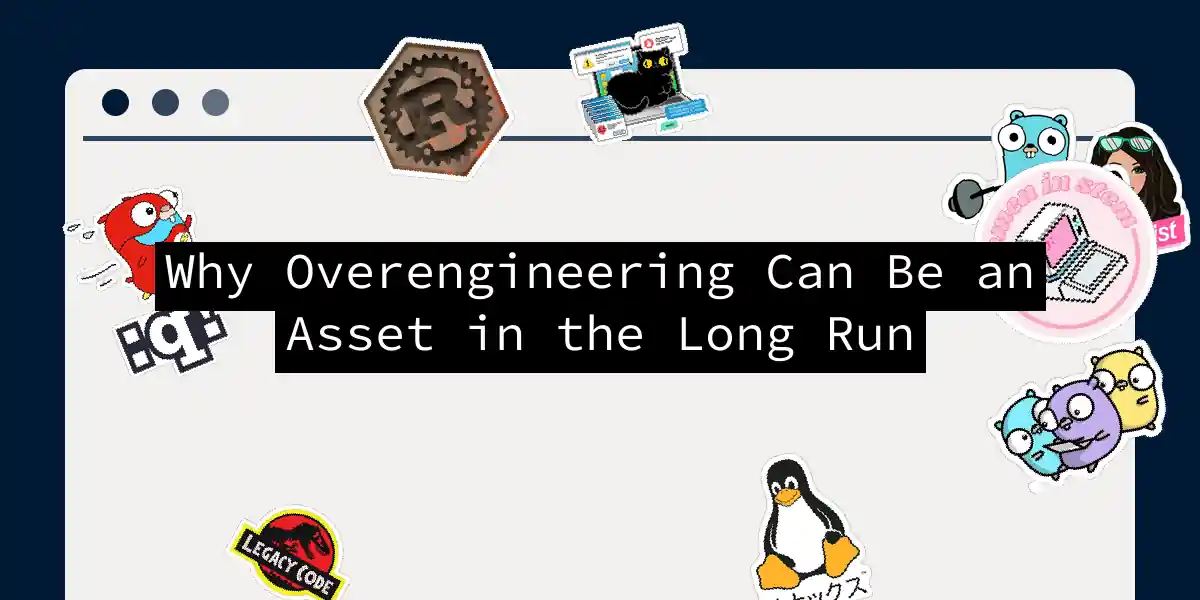The Double-Edged Sword of Overengineering
In the world of software development, the term “overengineering” often carries a negative connotation. It’s associated with bloated code, unnecessary complexity, and delayed product launches. However, there’s another side to this story – one where overengineering can be a strategic advantage, especially in certain contexts.
Understanding Overengineering
Before we dive into the benefits, let’s clarify what overengineering is. Overengineering involves designing a product or system that is more complex or feature-rich than necessary for its immediate use case. This can lead to longer development cycles, higher maintenance costs, and a steeper learning curve for users[1][2][5].
The Case for Overengineering
Performance and Safety
In critical systems, such as aviation or self-driving cars, overengineering is not just desirable but essential. Imagine an airplane’s software that doesn’t account for rare but critical scenarios like multiple engine failures or the loss of all hydraulic systems. In such cases, the extra complexity ensures safety and reliability, even if these scenarios are extremely rare[5].
For instance, in the development of self-driving car software, engineers must anticipate and prepare for a wide range of scenarios, including extreme weather conditions, unexpected pedestrian behavior, and hardware failures. This level of overengineering is crucial for building trust and ensuring the safety of passengers.
Future-Proofing
Overengineering can also be a form of future-proofing. When you build a system with more capabilities than currently needed, you’re preparing it for future requirements or expansions. This approach can save time and resources in the long run by avoiding the need for significant rewrites or redesigns.
For example, consider a company developing a mobile banking application. While the initial requirements might only include basic account management and transactions, overengineering the system to include advanced security features, risk management, and service diversification can position the application for future growth without the need for major overhauls[2].
Learning and Growth
Overengineering personal projects or side ventures can be a valuable learning experience. By tackling complex problems and implementing advanced technologies, developers can hone their skills and gain a deeper understanding of system design and architecture. This experience can be invaluable when working on more critical or complex projects in the future[3].
Balancing Act
While overengineering can be beneficial, it’s crucial to strike a balance. Here are some strategies to ensure that the benefits of overengineering are realized without the drawbacks:
Use the Opportunity Solution Tree Framework
The Opportunity Solution Tree (OST) framework helps align product development with business goals and user needs. It breaks down the development process into three main levels: outcomes, opportunities, and solutions. This framework ensures that any additional complexity introduced is aligned with the product vision and business requirements[1].
Refactor and Simplify
Code refactoring is essential for maintaining a healthy and efficient system. Regularly reviewing and simplifying the codebase can help remove unnecessary complexity and ensure that the system remains scalable and maintainable. This process enhances code readability, reduces technical debt, and improves overall system performance[2].
Focus on User Needs
User stories can help developers stay focused on the core needs of the users. By defining clear user objectives, developers can avoid adding unnecessary features and complexity. For example:
As a product manager, I need event-triggered in-app surveys so that I can collect feedback at the moment when the user engages with a feature.
This approach ensures that the development effort is directed towards solving real user problems rather than indulging in unnecessary complexity[1].
Conclusion
Overengineering is not always a villain in the world of software development. When done thoughtfully, it can provide significant benefits in terms of safety, future-proofing, and learning. However, it’s crucial to balance this approach with practical considerations such as user needs, business requirements, and the potential for increased complexity.
By understanding the contexts where overengineering can be an asset and implementing strategies to manage its risks, developers and product managers can create robust, scalable, and reliable systems that stand the test of time.
So, the next time you’re tempted to add that extra feature or layer of complexity, remember: sometimes, overengineering is not just okay – it’s necessary. Just make sure you’re doing it for the right reasons.
